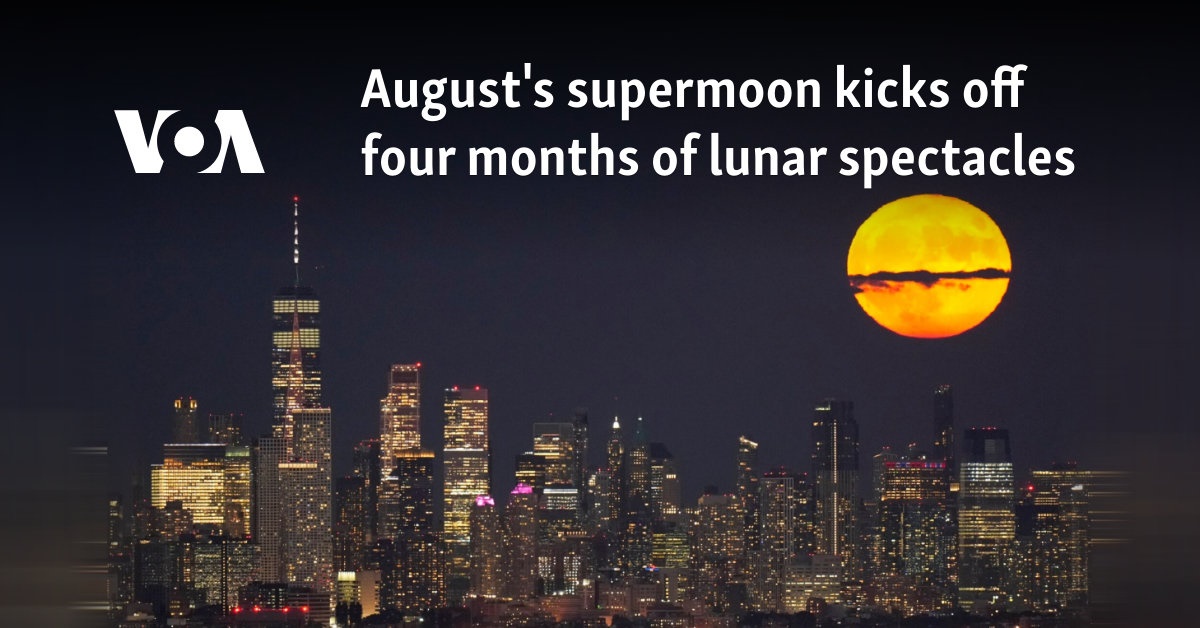
This article was originally published on VOA News - Science. You can read the original article HERE

The first of four supermoons this year rises next week, providing tantalizing views of Earth's constant companion.
Stargazers can catch the first act Monday as the full moon inches a little closer than usual, making it appear slightly bigger and brighter in the night sky.
"I like to think of the supermoon as a good excuse to start looking at the moon more regularly," said Noah Petro, project scientist for NASA's Lunar Reconnaissance Orbiter.
August's supermoon kicks off a string of lunar spectacles. September's supermoon will coincide with a partial lunar eclipse. October's will be the year's closest approach, and November's will round out the year.
What makes a moon so super?
More a popular term than a scientific one, a supermoon occurs when a full lunar phase syncs up with an especially close swing around Earth. This usually happens only three or four times a year and consecutively, given the moon's constantly shifting, oval-shaped orbit.
A supermoon obviously isn't bigger, but it can appear that way, although scientists say the difference can be barely perceptible.
"Unless you have looked at a lot of full moons or compare them in images, it is hard to notice the difference, but people should try," Petro said in an email.
How do supermoons compare?
There's a quartet of supermoons this year.
The first will be 361,970 kilometers away. The next will be nearly 4,484 kilometers closer the night of September 17 into the following morning.
A partial lunar eclipse will also unfold that night, visible in much of the Americas, Africa and Europe as the Earth's shadow falls on the moon, resembling a small bite.
October's supermoon will be the year's closest at 357,364 kilometers from Earth, followed by November's supermoon at 361,867 kilometers.
What's in it for me?
Scientists point out that only the keenest observers can discern the subtle differences. It's easier to detect the change in brightness — a supermoon can be 30% brighter than average.
With the U.S. and other countries ramping up lunar exploration with landers and eventually astronauts, the moon beckons brighter than ever. As project scientist for the first team of moonwalkers coming up under Apollo's follow-on program, Artemis, Petro is thrilled by the renewed lunar interest.
"It certainly makes it more fun to stare at," Petro said.
This article was originally published by VOA News - Science. We only curate news from sources that align with the core values of our intended conservative audience. If you like the news you read here we encourage you to utilize the original sources for even more great news and opinions you can trust!










Comments